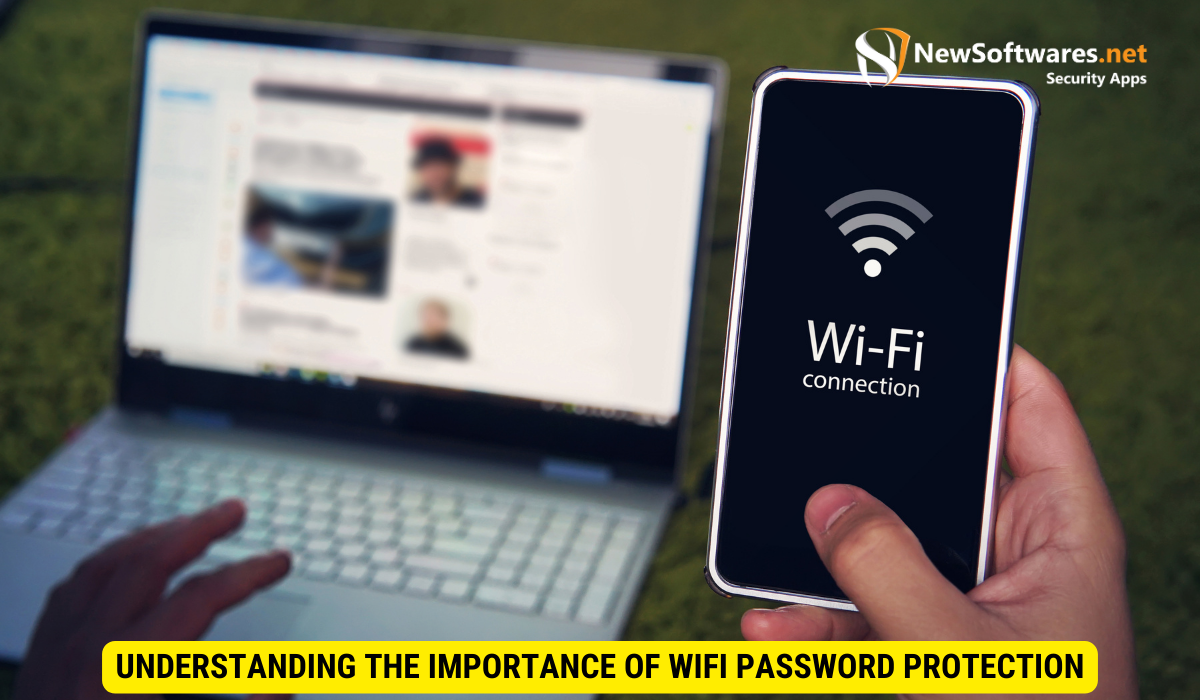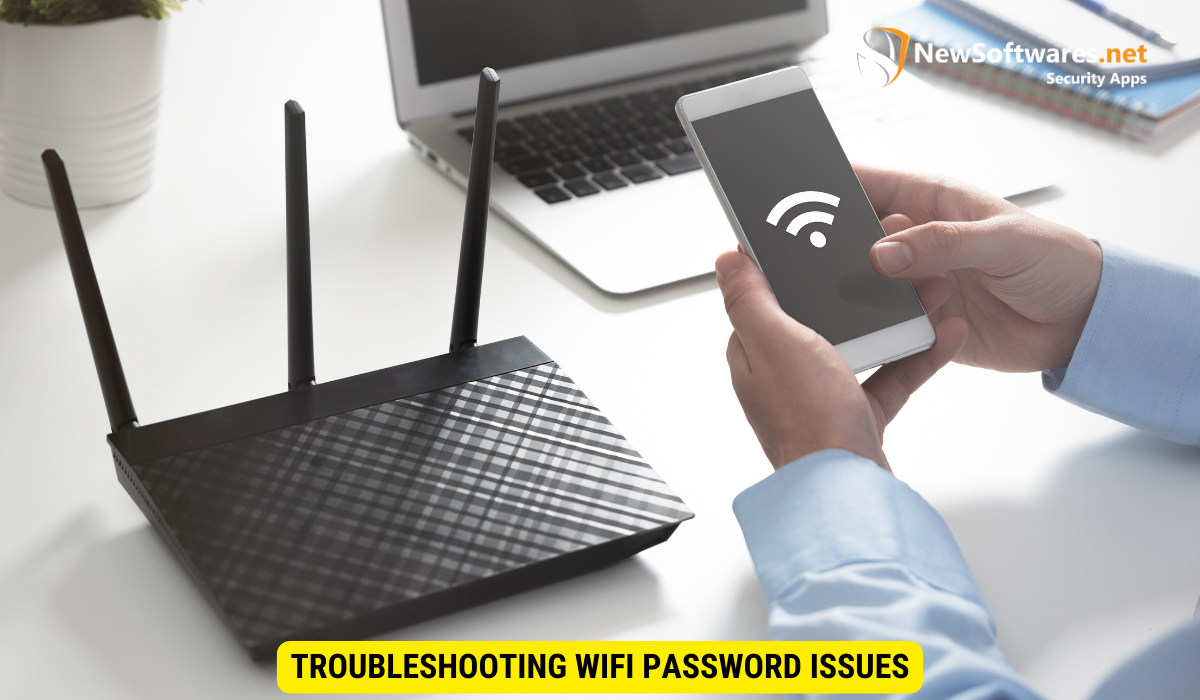Setting up a strong and secure WiFi password is crucial to prevent unauthorized access to your network. You should choose a combination of letters (both uppercase and lowercase), numbers, and special characters. Avoid easily guessable passwords and regularly change them to maintain security.
In today’s digital age, having a secure WiFi network is crucial to protect your personal information and ensure the safety of your online activities. Without proper protection, your WiFi network becomes vulnerable to various security threats. Luckily, there are simple ways to make your WiFi password protected and keep your network secure. I will discuss the importance of WiFi password protection, how to set up a strong password, advanced security measures, troubleshooting common issues, and maintaining your WiFi security.
Understanding the Importance of WiFi Password Protection

When it comes to WiFi networks, having a strong password is the first line of defense against unauthorized access. Without password protection, anyone within range can connect to your network and potentially access your personal information. This includes stealing sensitive data, monitoring your online activities, or even using your WiFi connection for illegal purposes.
Your WiFi network can also be a gateway for hackers to gain access to your connected devices, such as computers, smartphones, and smart home devices. This can lead to identity theft, financial loss, and other cybersecurity hazards.
The Risks of Unprotected WiFi
Operating an unprotected WiFi network exposes you to various risks. One common threat is known as “eavesdropping,” where hackers intercept and monitor your network traffic. This allows them to capture and analyze personal information, such as login credentials, credit card details, and other sensitive data that you transmit over the network.
Another risk is “WiFi piggybacking,” where unauthorized individuals leech off your WiFi connection, slowing down your internet speed and potentially causing additional security vulnerabilities.
Benefits of Securing Your WiFi
Securing your WiFi network offers several benefits. First and foremost, it helps maintain the privacy and security of your personal data. By requiring a password to access your WiFi network, you ensure that only authorized users can connect, minimizing the risk of data breaches and unauthorized access.
A secure WiFi network also provides a more reliable and stable internet connection. Since only authorized users are connected, there is less congestion on the network, resulting in improved speed and performance.
Setting Up Your WiFi Password
Setting up a strong and secure WiFi password is crucial to prevent unauthorized access to your network. Here are a few steps to guide you:
Choosing a Strong Password
When selecting a password for your WiFi network, it’s essential to choose a combination of letters (both uppercase and lowercase), numbers, and special characters. Avoid using easily guessable passwords like your name, birthdate, or consecutive numbers. The longer and more complex your password is, the harder it is for hackers to crack it.
It’s also recommended to change your WiFi password periodically to ensure continued security. A good practice is to change it every few months or whenever you suspect unauthorized access.
Changing Your Default WiFi Name and Password
Most WiFi routers come with default network names (SSIDs) and passwords provided by the manufacturer. It’s crucial to change these defaults as they are widely known and can be exploited by hackers.
Access your router’s settings by typing the router’s IP address into your web browser. Locate the wireless settings section and change the default SSID to a unique name that does not reveal personal information. Additionally, change the password to a strong, complex one that is unique to your network.
Advanced WiFi Security Measures
While setting up a strong password is a significant step towards securing your WiFi network, there are additional measures you can take to enhance its security.
Enabling Network Encryption
Encryption is a process that scrambles the data transmitted over your WiFi network, making it unreadable to unauthorized users. Enabling network encryption, such as Wi-Fi Protected Access (WPA2), adds an extra layer of security to your network.
To enable encryption, access your router’s settings, and select the appropriate encryption method. Use WPA2 if available, as it is currently the most secure option. Set a strong encryption passphrase or key for maximum protection.
Regularly Updating Your WiFi Password
As mentioned earlier, changing your WiFi password periodically is a good security practice. Additionally, you should consider updating your WiFi password if you suspect unauthorized access or any other security breach.
Regularly updating your password ensures that even if someone manages to acquire your network credentials, their access will be limited to the old password, thus preventing further unauthorized access.
Troubleshooting WiFi Password Issues

While setting up a password-protected WiFi network is essential, you may encounter certain issues along the way. Here are a couple of common problems and their solutions:
What to Do If You Forget Your Password
If you forget your WiFi password, don’t panic. Most routers provide a way to reset the password to the factory default settings. Look for the reset button on your router, usually located at the back or bottom. Press and hold the button for a few seconds until the router’s lights start blinking. This resets the router’s settings, including the WiFi password, to its default state.
However, keep in mind that resetting your router will erase all customized settings, so you’ll need to set up your WiFi network again from scratch.
Dealing with Connection Issues After Password Change
After changing your WiFi password, you may experience connection issues on your devices. To resolve this, try forgetting the old network on your devices and reconnecting to the WiFi network using the updated password.
If the problem persists, power cycle your router by turning it off, unplugging it from the power source, waiting for a few seconds, and then plugging it back in. Allow the router to reboot completely, and try connecting to the WiFi network again.
Maintaining Your WiFi Security
Maintaining the security of your WiFi network is an ongoing process. Here are a few practices to help you maintain a secure network:
Regularly Checking for Router Firmware Updates
Router manufacturers occasionally release firmware updates to fix security vulnerabilities and improve overall performance. It’s essential to regularly check for firmware updates and install them as they become available.
Access your router’s settings and look for the firmware update section. Follow the manufacturer’s instructions to download and install the latest firmware. Keep in mind that updating the firmware may temporarily interrupt your internet connection, so plan accordingly.
Monitoring Your Network Activity
Keep an eye on your network activity to detect any unusual or unauthorized access. Many routers provide built-in tools to monitor connected devices and track network usage. Regularly review the list of connected devices and check for any unfamiliar devices.
If you notice any suspicious activity, such as unrecognized devices or unexpectedly high network usage, take immediate action by changing your WiFi password and reviewing your network security settings.
Key Takeaways
- Protecting your WiFi network with a password is essential to prevent unauthorized access and safeguard your personal information.
- Securing your WiFi network not only protects your personal information but also ensures a better internet experience for you and your authorized users.
- Choose a strong password, change it periodically, and avoid using default network names and passwords to enhance the security of your WiFi network.
- Enable network encryption and periodically update your WiFi password to bolster the security of your WiFi network.
- If you forget your password, you can reset your router to factory defaults. If you face connection issues after changing the password, try forgetting the old network and power cycling your router.
- Regularly update your router’s firmware and monitor your network activity to maintain the security of your WiFi network.
FAQs
1. How often should I change my WiFi password?
It’s recommended to change your WiFi password every few months or whenever you suspect unauthorized access or a security breach. Regularly changing your password adds an extra layer of security to your network.
2. Can someone hack into my WiFi network?
If your WiFi network is unprotected or has weak security measures, it is possible for someone to hack into your network and gain unauthorized access. By setting up a strong password and enabling network encryption, you can significantly reduce the risk of hacking.
3. What is network encryption?
Network encryption is a security mechanism that scrambles the data transmitted over your WiFi network, making it unintelligible to unauthorized users. By enabling encryption, you ensure that only authorized devices can decrypt and access the transmitted data.
4. How do I update my router’s firmware?
To update your router’s firmware, access the router’s settings through your web browser, usually by typing the router’s IP address. Look for the firmware update section, and follow the manufacturer’s instructions to download and install the latest firmware version.
5. How can I monitor my network activity?
Most routers provide built-in tools and features that allow you to monitor network activity. Access your router’s settings, and look for options like device list, connected devices, or network monitoring. These tools provide information about devices connected to your network and their network usage.
Conclusion
Protecting your WiFi network with a strong password is a fundamental step to ensure the security of your personal information and prevent unauthorized access. By understanding the risks of unprotected WiFi and implementing basic security measures like choosing a strong password, changing default network settings, enabling network encryption, and regularly updating your WiFi password and router firmware, you can keep your WiFi network safe and enjoy a secure browsing experience.
